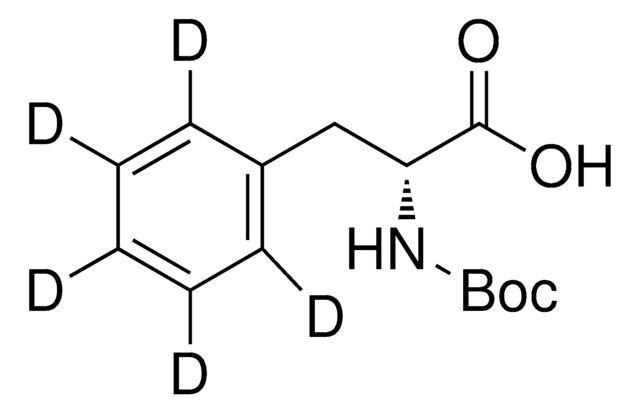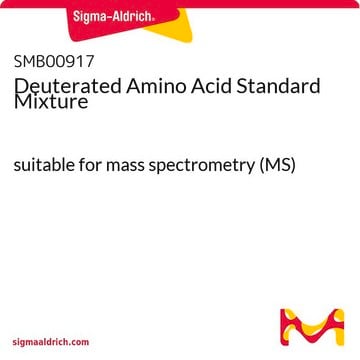661619
L-Phenyl-d5-alanine
endotoxin tested, 98 atom % D
About This Item
Recommended Products
isotopic purity
98 atom % D
form
solid
optical activity
[α]25/D -33.0°, c = 1 in H2O
mp
270-275 °C (dec.) (lit.)
suitability
endotoxin tested
mass shift
M+5
SMILES string
[H]C(N)(Cc1c([2H])c([2H])c([2H])c([2H])c1[2H])C(O)=O
InChI
1S/C9H11NO2/c10-8(9(11)12)6-7-4-2-1-3-5-7/h1-5,8H,6,10H2,(H,11,12)/t8-/m0/s1/i1D,2D,3D,4D,5D
InChI key
COLNVLDHVKWLRT-HRVDQBBZSA-N
Looking for similar products? Visit Product Comparison Guide
Related Categories
Application
Endotoxin testing is done on the bulk form of the product before subdivision packaging. This bulk test does not guarantee that the subdivision or repackaged aliquot is endotoxin-free when it is received or used by the customer and does not imply suitability for any particular purpose. If the product must be endotoxin-free for the intended application, the product should be tested prior to actual use.
Packaging
Storage Class Code
11 - Combustible Solids
WGK
WGK 1
Flash Point(F)
Not applicable
Flash Point(C)
Not applicable
Certificates of Analysis (COA)
Search for Certificates of Analysis (COA) by entering the products Lot/Batch Number. Lot and Batch Numbers can be found on a product’s label following the words ‘Lot’ or ‘Batch’.
Already Own This Product?
Find documentation for the products that you have recently purchased in the Document Library.
Our team of scientists has experience in all areas of research including Life Science, Material Science, Chemical Synthesis, Chromatography, Analytical and many others.
Contact Technical Service







